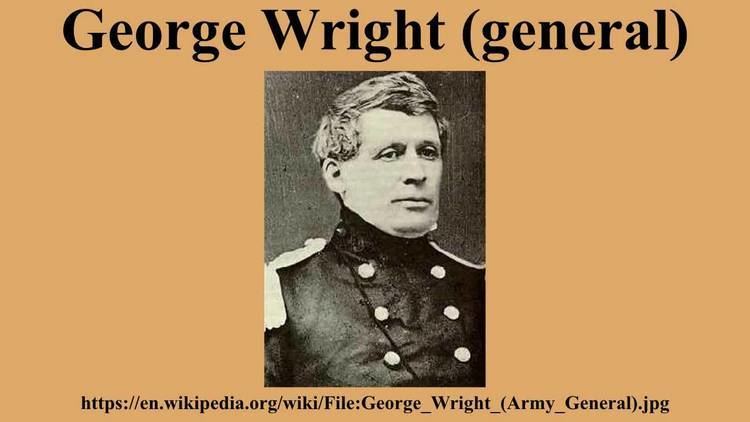Years of service 1822 - 1865 | Name George Wright Role Soldier | |
 | ||
Born October 22, 1803Norwich, Vermont ( 1803-10-22 ) Battles/wars Second Seminole WarMexican-American WarBattle of VeracruzBattle of Molino del ReyYakima WarBattle of Four LakesCivil War Education United States Military Academy Allegiance United States of America, Union Commands held | ||
George wright white christmas
George Wright (October 22, 1803 – July 30, 1865) was an American soldier who served in the Mexican-American War and the American Civil War.
Contents

Early life and career
Wright was born in Norwich, Vermont, and graduated from West Point in 1822. He served in the 3rd U.S. Infantry Regiment on the frontier in Wisconsin and Maine. In 1838 he transferred to the 8th Infantry Regiment and served on the Canada–US border.
In 1844, he fought in Florida against the Seminoles where he was appointed brevet major for meritorious service.
During the Mexican-American War, he served with the 8th Infantry at Vera Cruz and at the Battle of Molino del Rey, where he was wounded. For this service he was appointed a brevet colonel.
In 1848 he was promoted to major, and then lieutenant colonel in 1855, when he transferred to the 4th Infantry Regiment and served on the West Coast. Later in 1855 he was promoted to colonel and sent to Fort Monroe, Virginia to recruit the 9th Infantry Regiment, which, when at strength, was sent to the Washington Territory.
In 1858 Wright oversaw the reconstruction of Fort Dalles in Oregon Territory from a wood outpost to a more substantial base while in command. He fought in the Yakima War in 1855-6. In 1858, in retaliation for the Steptoe Battle, he soundly defeated the combined tribes in the Battle of Four Lakes and the Battle of Spokane Plains near Spokane. On September 23, 1858, after signing agreements with the Coeur d'Alenes, Wright was in camp near Latah (Hangman's) Creek, near present-day Spokane, Washington. He had in custody Chief Owhi, regarded as a perpetrator of the attacks on white settlers which led to the Yakima War. Wright sent for Owhi's son, Qualchan, also considered a perpetrator, threatening to hang Owhi unless Qualchan came to the camp. When Qualchan rode in the next day, he was taken into custody and hung within 15 minutes. Wright issued the orders to hang him, telling Captain James Allen Hardie to carry out the duty.
Civil War
At the beginning of the Civil War, Wright was the commanding officer of the Department of Oregon. Then, for a few months in 1861, he was the commanding officer of the District of Southern California. In October 1861, he was promoted to brigadier general of Volunteers and placed in command of the Department of the Pacific, replacing Edwin Vose Sumner, on Sumner's recommendation.
Although Wright would have preferred to have been sent East during the Civil War, he remained in California where he commanded the largest force ever in the Far West—6,000 troops in 1862. His duties included protecting the frontier, keeping watch on secessionists, safeguarding the coast, and moving troops eastward.
The climate of San Francisco was not agreeable to Wright, because of his asthma, and he wanted to move the headquarters to Sacramento. The headquarters did not move, although Wright did spend time in Sacramento.
Postbellum
When the regular army reorganized in 1865 and created the Military Division of the Pacific, Wright commanded the District of California for a few months until he was given command of the newly created Department of the Columbia. He may have been removed from command of the Department of the Pacific in order for the Army to have a position for Maj. Gen. Irvin McDowell.
Wright and his wife died at sea en route to his new command when the steamer Brother Jonathan was wrecked off the California coast. His body was recovered six weeks later. He is interred in the Sacramento Historic City Cemetery.
For his service as commander of the Department of the Pacific, he was appointed a brevet brigadier general in the regular army.
Namesake
Fort George Wright, located near Spokane, was named in his honor.
Family
In 1827, Wright married Margaret Wallace Foster (or Forster). They were the parents of three sons and one daughter -- Thomas Foster (or Forster), James Heron, Roswell, and Elizabeth H., the wife of Army Captain P. A. Owen.
